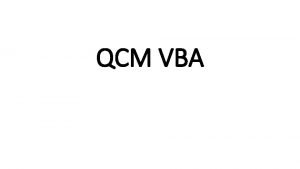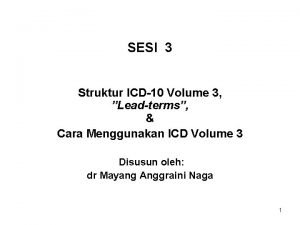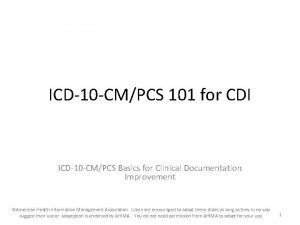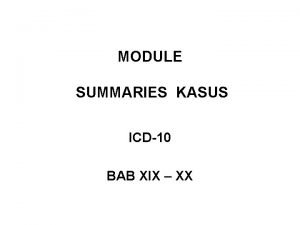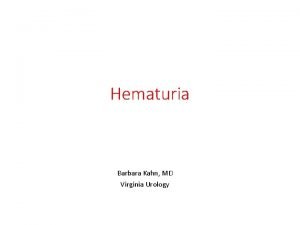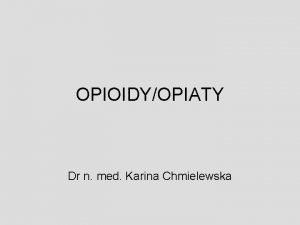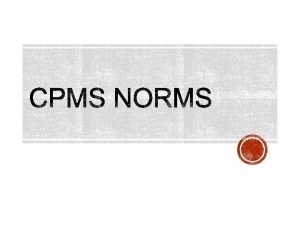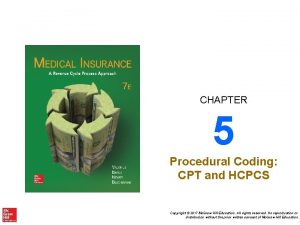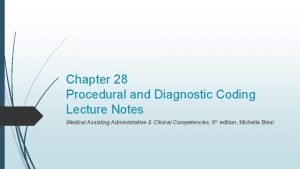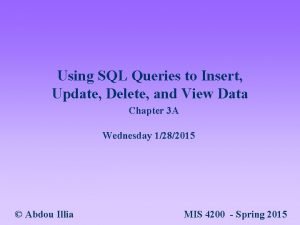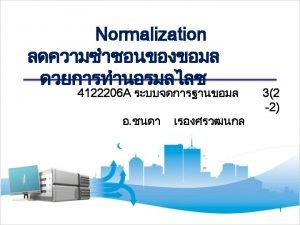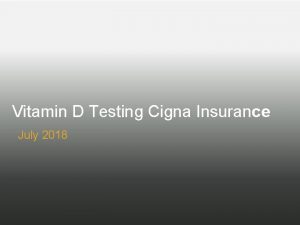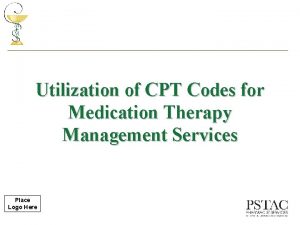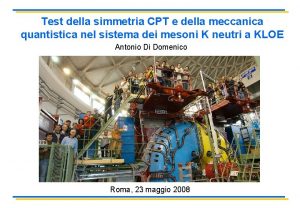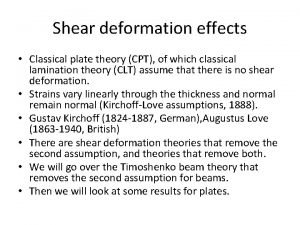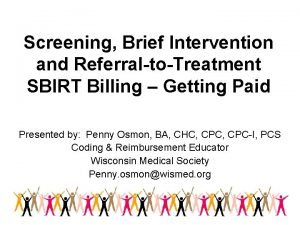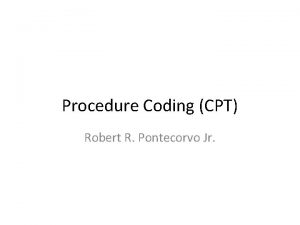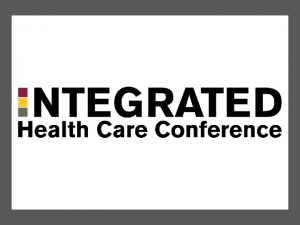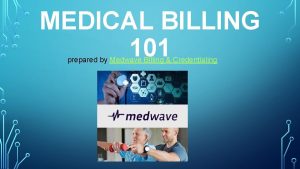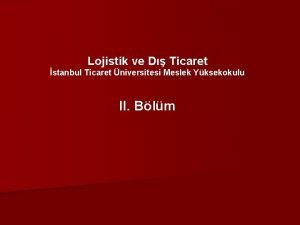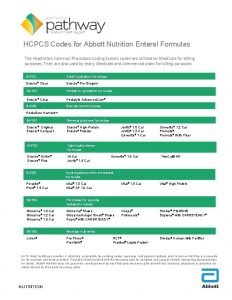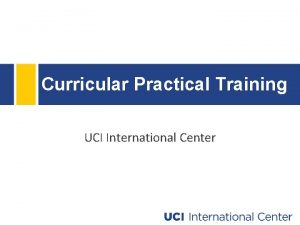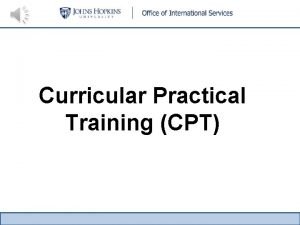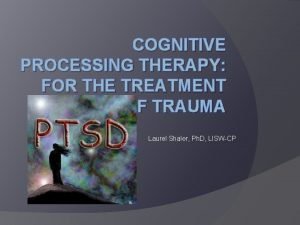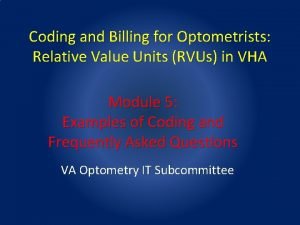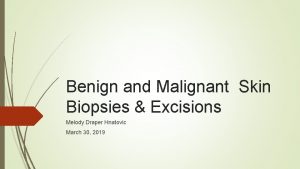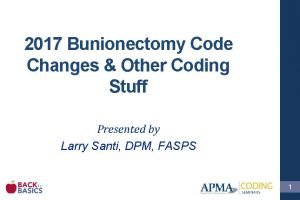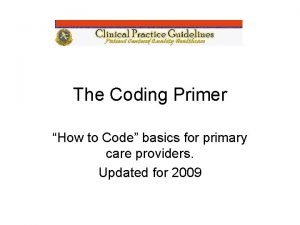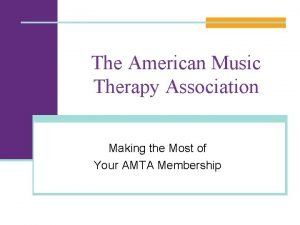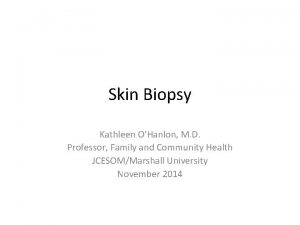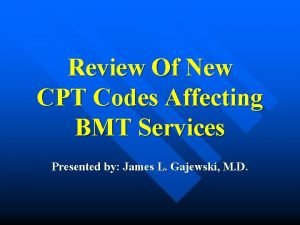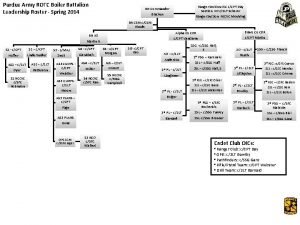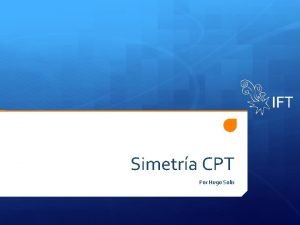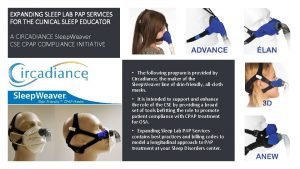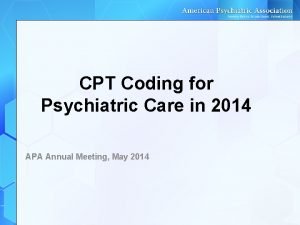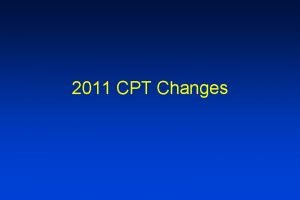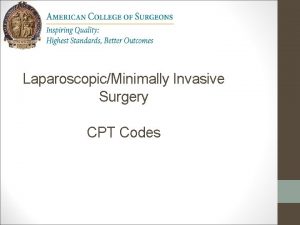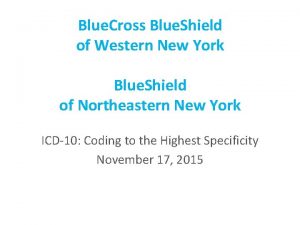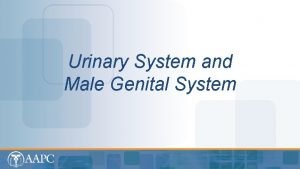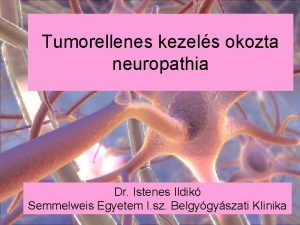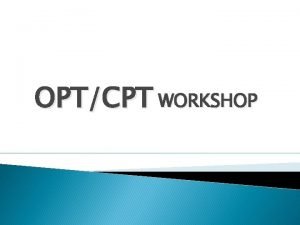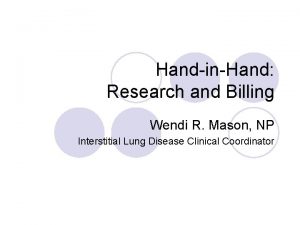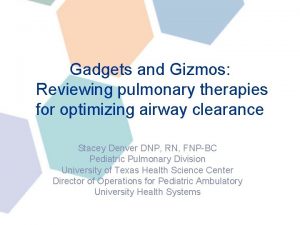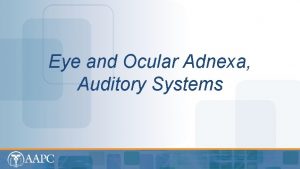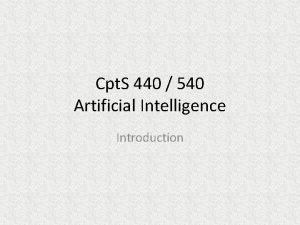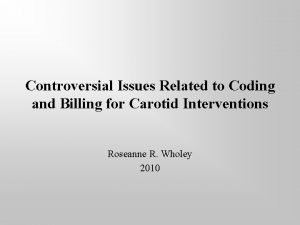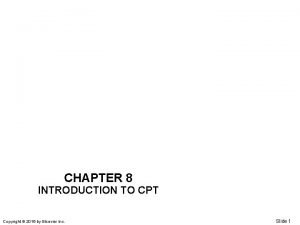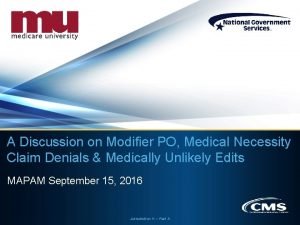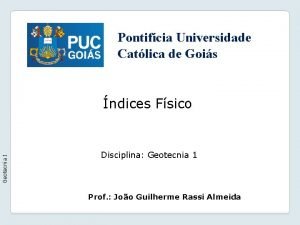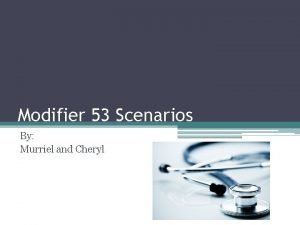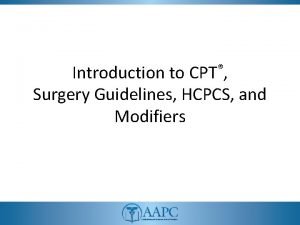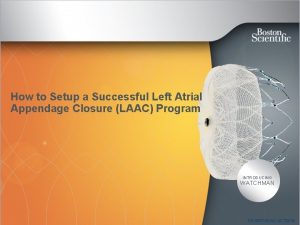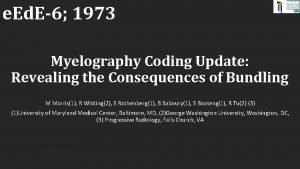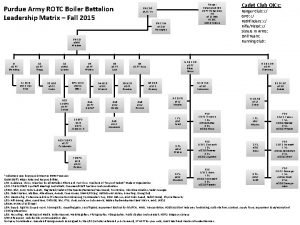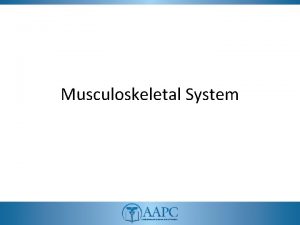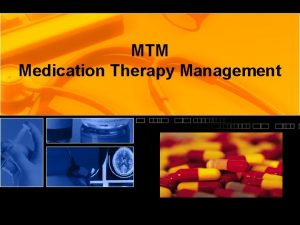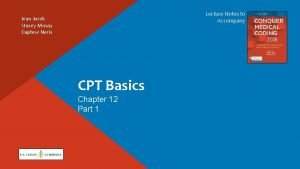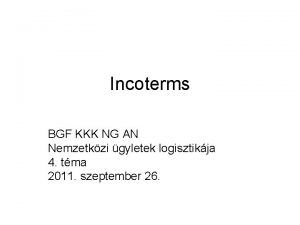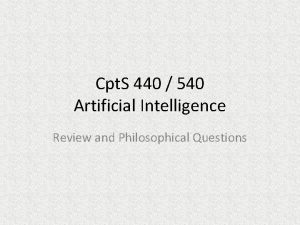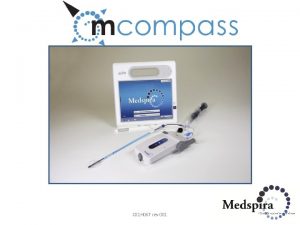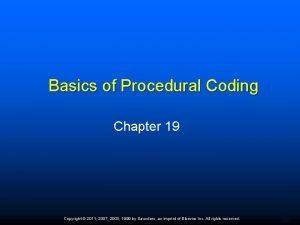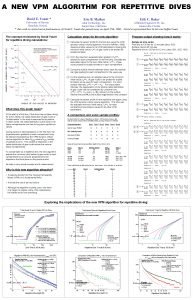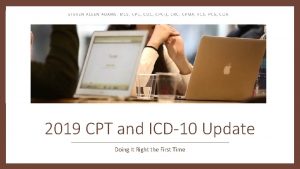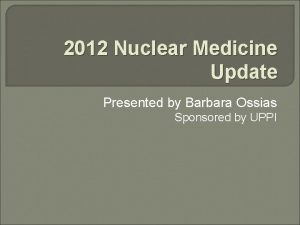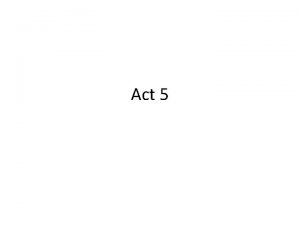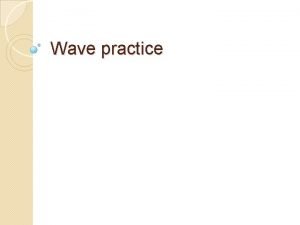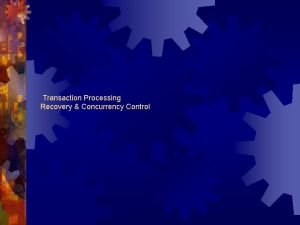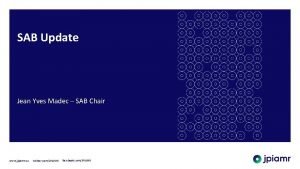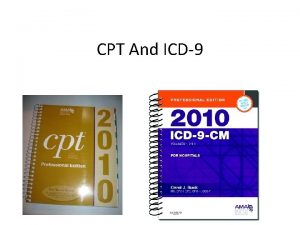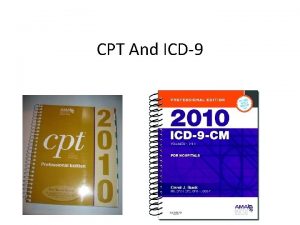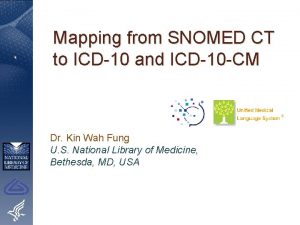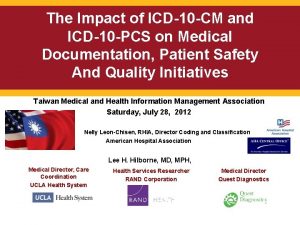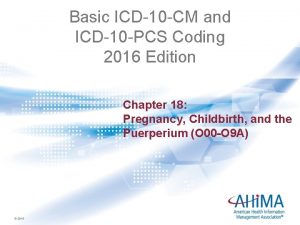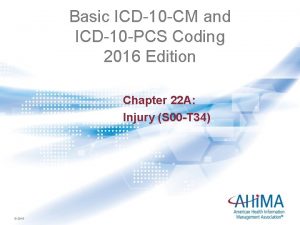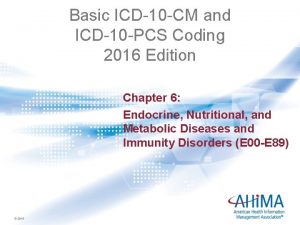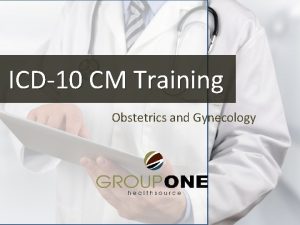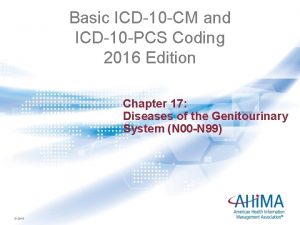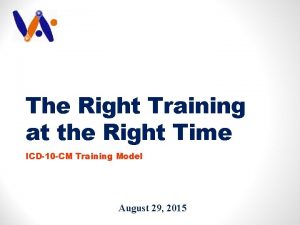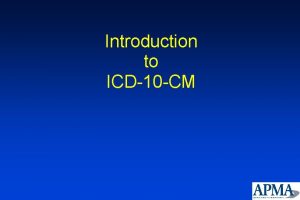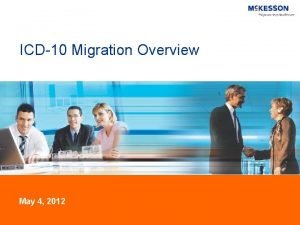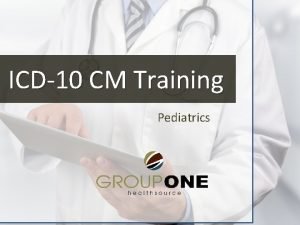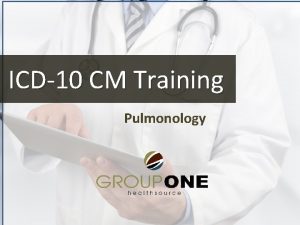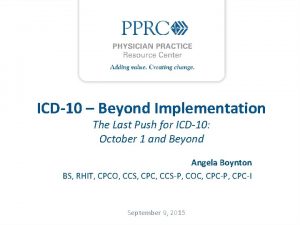2019 CPT and ICD10 Update Doing It Right





















































![11102 (Tangential biopsy of skin [e. g. , shave, scoop, saucerize, curette]; single lesion) 11102 (Tangential biopsy of skin [e. g. , shave, scoop, saucerize, curette]; single lesion)](https://slidetodoc.com/presentation_image/fcaceca626f07a2c13cf73925ec3df20/image-54.jpg)




































































- Slides: 122

2019 CPT and ICD-10 Update Doing It Right the First Time


Topics • QPP and MACRA Update • EM Changes now and in the Future • Surgery Section • Radiology Changes • Pathology Changes • Medicine Section Changes • ICD-10 Updates

QPP and MACRA

The 2019 MPFS conversion factor is increasing slightly from $35. 9996 this year to $36. 0391 CMS will not apply the multiple procedure payment reduction policy to office visits and other services done at the same encounter. Some Miscellaneous Issues First CMS is continuing to help small practices in Year 3 of Quality Payment Program (QPP) by increasing the small practice bonus to six points, but including it in the Quality performance category score of clinicians in small practices instead of as a standalone bonus

QPP and MIPS CMS also added an additional lowvolume threshold exemption to MIPS for next year. To be excluded, providers or groups need to meet at least one of the following conditions: 1. Have $90, 000 or less in Medicare Part B allowed charges for covered professional services. 2. Provide care to 200 or fewer Part B -enrolled patients. 3. Provide 200 or fewer covered professional services under the PFS.

QPP and MIPS The minimum period for each performance category remains unchanged, so quality and cost stay at 12 months while improvement activities and promoting interoperability remain at a continuous 90 -day period. However, the weighting to the final score of the cost and quality categories have both changed. Cost increases from 10 percent to 15 percent of the total score, and quality drops from 50 percent to 45 percent.





2019 E/M Update from CMS

We proposed to expand this policy to further simplify the documentation of history and exam for established patients such that, for both of these key components, when relevant information is already contained in the medical record, practitioners would only be required to focus their documentation on what has changed since the last visit or on pertinent items that have not changed, rather than redocumenting a defined list of required elements such as review of a specified number of systems and family/social history. Practitioners would still review prior data, update as necessary, and indicate in the medical record that they had done so. Practitioners would conduct clinically relevant and medically necessary elements of history and physical exam, and conform to the general principles of medical record documentation in the 1995 and 1997 guidelines. However, practitioners would not need to re-record these elements (or parts thereof) if there is evidence that the practitioner reviewed and updated the previous information.

Chief Complaint and HPI Additionally, we are clarifying that for E/M office/outpatient visits, for new and established patients for visits, practitioners need not re-enter in the medical record information on the patient’s chief complaint and history that has already been entered by ancillary staff or the beneficiary. The practitioner may simply indicate in the medical record that he or she reviewed and verified this information; and

Review and Validated For established patient office/outpatient visits, when relevant information is already contained in the medical record, practitioners may choose to focus their documentation on what has changed since the last visit, or on pertinent items that have not changed, and need not re-record the defined list of required elements if there is evidence that the practitioner reviewed the previous information and updated it as needed. Practitioners should still review prior data, update as necessary, and indicate in the medical record that they have done so.

Teaching Physicians and Residents Removal of potentially duplicative requirements for notations in medical records that may have previously been included in the medical records by residents or other members of the medical team for E/M visits furnished by teaching physicians.

New HCPCS Codes for 2019 Brief communication technology-based service, e. g. virtual check-in (HCPCS code G 2012) and Remote evaluation of recorded video and/or images submitted by an established patient (HCPCS code G 2010)


G 2012 (Brief communication technology-based service, e. g. virtual check-in, by a physician or other qualified health care professional who can report evaluation and management services, provided to an established patient, not originating from a related E/M service provided within the previous 7 days nor leading to an E/M service or procedure within the next 24 hours or soonest available appointment; 5 -10 minutes of medical discussion)

G 2010 (Remote evaluation of recorded video and/or images submitted by an established patient (e. g. , store and forward), including interpretation with follow-up with the patient within 24 business hours, not originating from a related E/M service provided within the previous 7 days nor leading to an E/M service or procedure within the next 24 hours or soonest available appointment)

Definitions Practitioners could be separately paid for the brief communication technology-based service when the patient checks in with the practitioner via telephone or other telecommunications device to decide whether an office visit or other service is needed. This would increase efficiency for practitioners and convenience for beneficiaries. Similarly, the service of remote evaluation of recorded video and/or images submitted by an established patient would allow practitioners to be separately paid for reviewing patient-transmitted photo or video information conducted via prerecorded “store and forward” video or image technology to assess whether a visit is needed.

2021 Changes Reduction in the payment variation for E/M office/outpatient visit levels by paying a single rate for E/M office/outpatient visit levels 2 through 4 for established and new patients while maintaining the payment rate for E/M office/outpatient visit level 5 in order to better account for the care and needs of complex patients;



2021 Changes Permitting practitioners to choose to document E/M office/outpatient level 2 through 5 visits using medical decision-making or time instead of applying the current 1995 or 1997 E/M documentation guidelines, or alternatively practitioners could continue using the current framework;

2021 Changes Beginning in CY 2021, for E/M office/outpatient levels 2 through 5 visits, we will allow for flexibility in how visit levels are documented - specifically, a choice to use the current framework, MDM, or time. For E/M office/outpatient level 2 through 4 visits, when using MDM or current framework to document the visit, we will also apply a minimum supporting documentation standard associated with level 2 visits. For these cases, Medicare would require information to support a level 2 E/M office/outpatient visit code for history, exam and/or medical decision-making;

2021 Changes When time is used to document, practitioners will document the medical necessity of the visit and that the billing practitioner personally spent the required amount of time face-to-face with the beneficiary;

Implementation of add-on codes that describe the additional resources inherent in visits for primary care and particular kinds of non-procedural specialized medical care, though they would not be restricted by physician specialty. These codes would only be reportable with E/M office/outpatient level 2 through 4 visits, and their use generally would not impose new per-visit documentation requirements. 2021 Changes

2021 Changes Adoption of a new “extended visit” add-on code for use only with E/M office/outpatient services. To report extended time for E/M office and other outpatient E/M services when face-to-face time exceeds 34 minutes for an established patient or 38 minutes for a new patient whose E/M service is reported as level 2 through 4 and to report a level 5 code with prolonged service add-on code when face-to-face time exceeds 69 minutes for established patients or 89 minutes for new patients.

2019 CPT and ICD-10 Updates

CPT Changes 2019 The new current procedural terminology (CPT®) codes have been released with 335 code changes in 2019. There were many code revisions with guideline, description and instructional note changes. Let’s look at the highlights of many new CPT codes for 2019.

Modifier 63 Changes

Modifier 63 – Appendix F When a surgeon performs certain procedures on an infant weighing less than 4 kilograms (approx. 8. 8 lbs. ), append modifier 63 to the CPT® code to inform the payer of the increased complexity of the procedure due to the patient’s small size, which may—depending on your payer and your negotiating skills—result in higher reimbursement.

EM Coding Changes

CCRPM “Chronic Care Remote Patient Monitoring" -- an interaction whereby a patient purchases a home monitoring device to collect their health information and transmit that information to their doctor.

CCRPM Chronic Care Remote Physiologic Monitoring (“CCRPM”) for (1) initial set-up and patient education, (2) initial device supply, and (3) monitoring data and interacting with patients or caregivers.

Remote Monitoring 99453: Remote monitoring of physiologic parameter(s) (eg, weight, blood pressure, pulse oximetry, respiratory flow rate), initial; set-up and patient education on use of equipment 99454: Remote monitoring of physiologic parameter(s) (eg, weight, blood pressure, pulse oximetry, respiratory flow rate), initial; device(s) supply with daily recording(s) or programmed alert(s) transmission, each 30 days

Remote Monitoring 99457 (Remote physiologic monitoring treatment management services, 20 minutes or more of clinical staff/physician/other qualified health care professional time in a calendar month requiring interactive communication with the patient/caregiver during the month) Use 99457 for time spent managing care when patients or the practice do not meet the requirements to report more specific services - CPT explains.

99091

Differences The Rule states that CPT Code 99457 describes only professional time and “therefore cannot be furnished by auxiliary personnel incident to a practitioner’s professional services. ”

More to Come… CMS stated in the Rule that it plans to issue further guidance to help practitioners and stakeholders determine the scope of service and better interpret the code descriptors listed above. Specifically, we can expect guidance on (i) the types of technology that can be used to provide these new RPM services, (ii) whether the descriptor for CPT Code 99454 includes transmissions that occur other than daily, and (iii) whether CPT Code 99453 can be furnished via telecommunication technology.

Fee Data

Physician-Led Chronic Care Management (CCM) 99491 - CCM services, provided personally by a physician or other qualified health care professional, at least 30 minutes of physician or other qualified health care professional time, per calendar month, with the following required elements: multiple (two or more) chronic conditions expected to last at least 12 months, or until the death of the patient, chronic conditions place the patient at significant risk of death, acute exacerbation/decompensation, or functional decline; comprehensive care plan established, implemented, revised, or monitored 99491 $81. 33

Interprofessional Consults 99446: Interprofessional telephone/Internet assessment and management service provided by a consultative physician including a verbal and written report to the patient's treating/requesting physician or other qualified health care professional; 5 -10 minutes of medical consultative discussion and review 99447: Same as 99446, but 11 -20 minutes of medical consultative discussion and review 99448: Same as 99446, but 21 -30 minutes of medical consultative discussion and review 99449: Same as 99446, but 31 minutes or more of medical consultative discussion and review

Interprofessional Consults 99451 (Interprofessional telephone/Internet/electronic health record assessment and management service provided by a consultative physician, including a written report to the patient’s treating/requesting physician or other qualified health care professional, 5 minutes or more of medical consultative time) *99452 (Interprofessional telephone/Internet/electronic health record referral service[s] provided by a treating/requesting physician or other qualified health care professional, 30 minutes)

Interprofessional Consults • 99446 $17. 92 • 99447 $35. 52 • 99448 $53. 44 • 99449 $71. 04 • 99451 $36. 56 • 99452 $36. 56

Surgery Changes

New for 2019

FNAB and a Core Needle Biopsy (CNB) The FNAB involves aspiration of material with a fine needle and cytological examination of the cells. A core needle biopsy involves obtaining a core sample with a larger bore needle and histopathologic examination of the tissue

10021 (Fine needle aspiration biopsy; without imaging guidance) will be revised to state “Fine needle aspiration biopsy; without imaging guidance; first lesion. ” When appropriate, a provider would report a new add-on code: 2019 FNAB Codes 10004 (Each additional lesion [List separately in addition to code for primary procedure]). Four more primary and add-on pairings will be available to report FNAB with (10005 -10006) – Ultrasound; (10007 -10008) – Fluoroscopy; (10009 -10010) – CT; or (10011 -10012) – MRI


Allowables 10004 $51. 88 10005 $122. 57 10006 $59. 67 10007 $269. 89 10008 $152. 79 10009 $438. 57 10010 $265. 55 10021 $94. 70

Biopsy Codes Deleted 11100 (Biopsy of skin, subcutaneous tissue and/or mucous membrane [including simple closure], unless otherwise listed; single lesion); and +11101 (…; each separate/additional lesion [List separately in addition to code for primary procedure])
![11102 Tangential biopsy of skin e g shave scoop saucerize curette single lesion 11102 (Tangential biopsy of skin [e. g. , shave, scoop, saucerize, curette]; single lesion)](https://slidetodoc.com/presentation_image/fcaceca626f07a2c13cf73925ec3df20/image-54.jpg)
11102 (Tangential biopsy of skin [e. g. , shave, scoop, saucerize, curette]; single lesion) and +11103 (…, each separate/additional lesion [List separately in addition to code for primary procedure] The definition states that the biopsy is performed - with a sharp blade, such as a flexible biopsy blade, obliquely oriented scalpel or curette to remove a sample of epidermal tissue with or without portions of the underlying dermis 11104 Punch biopsy of skin, single lesion +11105 (…; each separate/additional lesion [List separately in addition to code for primary procedure]) also includes a simple closure 11106 Incisional biopsy of skin, single lesion +11107 (…; each separate/additional lesion [List separately in addition to code for primary procedure]) also includes a simple closure


Allowables 11102 $93. 68 11103 $50. 62 11104 $117. 76 11105 $58. 06 11106 $142. 57 11107 $68. 50

Arthrography When the provider performs a radiographic arthrography, report 73580 (Radiologic examination, knee, arthrography, radiological supervision and interpretation).

Arthrography Change for Common Code Arthrography code 27370 (Injection of contrast for knee arthrography) will be deleted and replaced with 27369 (Injection procedure for contrast knee arthrography or contrast enhanced CT/MRI knee arthrography). If you need help selecting the correct image guidance codes, look no further than the detailed parenthetical guidance. # 27369 $134. 91 $41. 27

Fluoroscopic Needle Guidance When the provider uses fluoroscopic needle guidance (77002) for an enhanced computed tomography arthrography, report 77002 and 73701 (Computed tomography, lower extremity; with contrast material[s]) or 73702 (…; without contrast material, followed by contrast material[s] and further sections). If fluoroscopic needle guidance is used for an enhanced magnetic resonance arthrography use the needle guidance code and 73722 (Magnetic resonance [eg, proton] imaging, any joint of lower extremity; with contrast material[s]) or 73723 (…; without contrast material, followed by contrast material[s] and further sequences).

CPT codes 20932 -20934 were added for allografts. CPT 20932 includes templating, cutting, placement and internal fixation; osteoarticular, whereas CPT 20933 is hemicortical, intercalary, partial and CPT 20934 is hemicortical, complete. Allografts


Pacemaker Changes Category III codes 0387 T-0391 T were deleted and replaced with permanent codes 33274 (Transcatheter insertion or replacement of permanent leadless pacemaker, right ventricular, including imaging guidance [eg, fluoroscopy, venous ultrasound, ventriculography, femoral venography] and device evaluation [eg, interrogation or programming], when performed) and 33275 (Transcatheter removal of permanent leadless pacemaker, right ventricular).


New guidelines state that insertion of a catheter into the right ventricle is included in the insertion, replacement or removal of a leadless pacemaker system. In addition, right heart catheterization codes 93451, 93453, 93456, 93457, 93460, 93461 and 93530 -93533 should not be reported with the insertion or removal codes unless the right heart catheterization treats a condition that is “distinct from the leadless pacemaker procedure. ” And when a system is removed and replaced during the same session, report 33274.


Aortic Procedure 33440 Replacement, aortic valve by translocation of autologous pulmonary valve and transventricular aortic annulus enlargement of the left ventricular outflow tract with valved conduit replacement of pulmonary valve (Ross-Konno Procedure)

In layman's terms it means that they will take out his diseased aortic valve and replace with his own pulmonary valve


Definition of Central Venous Access Device To qualify as a central venous access catheter or device, the tip of the catheter/device must terminate in the subclavian, brachiocephalic (innominate) or iliac veins, the superior or inferior vena cava, or the right atrium to be considered a “central venous” catheter. The venous access device may be either: • Centrally inserted (jugular, subclavian, femoral vein or inferior vena cava catheter entry site); or • Peripherally inserted (eg, basilic, cephalic, or saphenous vein entry site). The device may be accessed for use either via exposed catheter (external to the skin), via a subcutaneous port or via a subcutaneous

Vascular Access Central and Peripheral Lines

Imaging Assistance with Central Lines When imaging guidance is used for centrally inserted central venous catheters, for gaining access to the venous entry site and/or for manipulating the catheter into final central position, imaging guidance codes (eg, 76937, 77001) may be reported separately. Do not use 76937, 77001 in conjunction with 36568, 36569, 36572, 36573, 36584.

New PICC Line Including Imaging New CPT codes 36572 and 36573 are used for an insertion of a peripherally inserted central venous catheter (PICC) without a subcutaneous port or pump including all imaging guidance

Revised PICC Line Including Imaging 36584 Replacement, complete, of a peripherally inserted central venous catheter (PICC), without subcutaneous port or pump, through same venous access, including all imaging guidance, image documentation, and all associated radiological supervision and interpretation required to perform the replacement

Imaging Assistance with PICC Lines Chest X-ray codes (71045 -71048) or other imaging services to document the final catheter tip position are bundled into 36584 and 36572 -36573. However, when the provider uses imaging but does not confirm the tip’s location, the practice should append modifier 52 (Reduced services) with the code.

Midline Catheter Finally, if you’ve been wondering how to report a midline catheter, the manual has the answer: Use a venipuncture code (36400 -36410).


New Code for Excision of Lymph Node(s) 38531 is used to report a biopsy or excision of an open inguinofemoral lymph node.

Gastrostomy Tube Placement 43762 is reported for the percutaneous gastrostomy tube replacement including removal without imaging or endoscopic guidance not requiring revision of the gastrostomy tract and 43763 requires revision of gastrostomy tract. These codes were added to define simple versus complex replacement of a percutaneous gastrostomy tube.


Dilation of Percutaneous Genitourinary Tract CPT codes 50436 and 50437 are used to report dilation of existing tract, percutaneous for an endourologic procedure including imaging guidance with post procedural tube placement. CPT 50437 is reported when new access into the renal collecting system is performed.


Transurethral Destruction of Prostate New CPT code 53854 was added to report a transurethral destruction of prostate tissue by radiofrequency generated water vapor thermotherapy.


Vulvectomy Notes



Radiology Changes

In addition, the new guidance warns practices that nonimage-guided tracking or localization – such as radar should not be reported with radiology codes. Non-Image Guided Services According to CPT: - Imaging guidance should only be reported when an imaging modality (e. g. , radiography, fluoroscopy, ultrasonography, magnetic resonance imaging, computed tomography, or nuclear medicine) is used and is appropriately documented the new guidance states.

According to the supervision and interpretation, imaging guidance section, all imaging guidance codes require image documentation in the patient chart and a description of the image guidance in the procedure note. Here It Is In Writing Radiological supervision and interpretation (S & I) documentation must include documentation in the patient’s “permanent record” and a procedure or separate image report “that includes written documentation of interpretive findings of information contained in the images and radiologic supervision of the service. ” In addition, new text in the written reports section states that for the purposes of descriptors for imaging services, the images “must contain anatomic information unique to the patient for which the imaging service is provided. ”

MRE New CPT code 76391 is used to report Magnetic Resonance (vibration) Elastography.

USE - Ultrasound New codes were established for ultrasound elastography, CPT 76981 -76983. These new codes distinguish reporting, per organ, first target lesion and each additional target lesion. Magnetic resonance elastography is new diagnostic imaging technology.


Cancer is harder than surrounding tissue

Microbubble Two new CPT codes 7697876979 are used to report ultrasound procedures that use dynamic microbubblesonographic contrast with targeted ultrasound to evaluation lesions.


Breast MRI Procedures CPT codes 77058 and 77059 were deleted. Four new breast MRI procedures were added (77046 -77049). Codes are selected based on laterality (unilateral vs. bilateral) and with or without contrast material.

77046 Magnetic resonance imaging, breast, without contrast material unilateral 77047 bilateral Breast MRI Images 77048 Magnetic resonance imaging, breast, without and with contrast material(s), including computer-aided detection (CAD real -time lesion detection, characterization and pharmacokinetic analysis), when performed unilateral 3 CPT Changes: 77049 bilateral (77051 has been deleted. To report, see 77065, 77066) (77052 has been deleted. To report, use 77067


Pathology Changes

Pathology Changes Due to frequent use, many services previously classified with the Tier 2 molecular pathology codes are now described using standalone Tier 1 codes like 81171 -81183 The BRCA 1 & BRCA 2 codes have also been revised due to changes in clinical practice and are listed under Tier 1 codes

Medicine Section Changes

New Flu Vaccine CPT code 90689 was added to report an inactivated adjuvanted preservative free flu vaccination.

In the Ophthalmology section, new codes 92273 and 92274 were added. These are electroretinography procedures to evaluate function of the retina and optic nerve of the eye. Electroretinography (ERG) CPT 92273 was added to report global response of photoreceptors of the retina and CPT 92274 to report photoreceptors in multiple separate locations in the retina and macula.


Electrocardiogram In the Electrocorticography section, CPT 95836 (electrocardiogram) was added to report recording of ECo. G from electrodes chronically implanted on or in the brain to allow for intracranial recordings to continue after the patient has been discharged from the hospital.

Implanted Neurostimulator Pulse Generator/Transmitter with Programming A group of new codes (9597695984) describe services related to implanted neurostimulator pulse generator/transmitter. Codes are selected based on the nerve selected and simple versus complex.


Developmental Testing 96111 (deleted) Developmental testing, (includes assessment of motor, language, social, adaptive, and/or cognitive functioning by standardized developmental instruments) with interpretation and report

• CPT codes 96136 -96139 were added to report psychological or neuropsychological report testing and scoring. Codes are based on time and whether the service was performed by a technician or clinician. CPT code 96146 is used to report psychological or neuropsychological automated testing using an electronic platform.

Adaptive Behavior Assessment

Adaptive Behavior Treatment

ICD-10 Updates

Chapter 4

Chapter 5

Chapter 9

Chapter 11

Chapter 13

Chapter 15

Chapter 21

Topics • QPP and MACRA Update • EM Changes now and in the Future • Surgery Section • Radiology Changes • Pathology Changes • Medicine Section Changes • ICD-10 Updates

Questions

Contact Me Direct: E-Fax: E-mail: Web: FB: Twitter: 706 -483 -4728 770 -709 -3698 steve. adams@inhealthps. com www. thecodingeducator. com facebook. com/kingofcoders @thekingofcoders
 Right product right place right time right price
Right product right place right time right price Family time
Family time Qcm visual basic
Qcm visual basic Immediate update and deferred update in dbms
Immediate update and deferred update in dbms The right man on the right place at the right time
The right man on the right place at the right time Anything worth doing is not necessarily worth doing well
Anything worth doing is not necessarily worth doing well Doing nothing is doing ill
Doing nothing is doing ill Icd x luka bakar
Icd x luka bakar Kode icd otalgia
Kode icd otalgia Intoksikasi makanan icd 10
Intoksikasi makanan icd 10 Icd10 volume 3 bahasa indonesia
Icd10 volume 3 bahasa indonesia Icd10 orthopaedics
Icd10 orthopaedics Cdi icd 10
Cdi icd 10 Chronic allergies icd 10
Chronic allergies icd 10 Icd10 sungsang
Icd10 sungsang Isrr icd 10
Isrr icd 10 Icd 10 code for microhematuria
Icd 10 code for microhematuria Crvo icd10
Crvo icd10 Opioidy
Opioidy Integrity is doing the right thing when nobody's watching
Integrity is doing the right thing when nobody's watching Lately i been i been losing sleep
Lately i been i been losing sleep Sound product knowledge in food and beverage service
Sound product knowledge in food and beverage service Left left right right go go go
Left left right right go go go You put your left foot in you put your left foot out
You put your left foot in you put your left foot out Left left right right go go go
Left left right right go go go Cpt symbols and meanings
Cpt symbols and meanings Cpt symbols and meanings
Cpt symbols and meanings Sql queries for insert update and delete
Sql queries for insert update and delete Data redundancy and update anomalies
Data redundancy and update anomalies Cigna vitamin d policy
Cigna vitamin d policy Cpt code 99606
Cpt code 99606 Simmetria cpt
Simmetria cpt Trainuivlo cpt
Trainuivlo cpt Sbirt cpt code
Sbirt cpt code 97800 cpt code
97800 cpt code 99243 cpt code
99243 cpt code Notre dame cpt
Notre dame cpt 99366 cpt code
99366 cpt code Cpt teslim şekli
Cpt teslim şekli Cpt umich
Cpt umich Tamu terradota
Tamu terradota Abbott hcpcs codes
Abbott hcpcs codes Duke visa
Duke visa Uci international center cpt
Uci international center cpt Ois jhu opt
Ois jhu opt Steven ghulamani
Steven ghulamani Cpt europa
Cpt europa Trust star worksheet examples
Trust star worksheet examples Optometry coding and billing
Optometry coding and billing Cpt code 11102
Cpt code 11102 Cpt code 95716
Cpt code 95716 Apma coding resource
Apma coding resource Horizonnjhealth.com register
Horizonnjhealth.com register Shave biopsy cpt code
Shave biopsy cpt code Cpt code for music therapy
Cpt code for music therapy Throchlea
Throchlea Biopsy
Biopsy Cpt code for bmt
Cpt code for bmt Purdue army rotc
Purdue army rotc Simetras
Simetras Cpt 95807
Cpt 95807 Cpt code 96118 neuropsychological testing
Cpt code 96118 neuropsychological testing Apa cpt codes
Apa cpt codes 11010 cpt code
11010 cpt code Laparoscopic pyloromyotomy cpt code
Laparoscopic pyloromyotomy cpt code Código cpt 57522
Código cpt 57522 90889 cpt code
90889 cpt code 96120 cpt code description
96120 cpt code description Cpt 99080
Cpt 99080 Iri cpt
Iri cpt Cpt 51999
Cpt 51999 Neurometer cpt
Neurometer cpt Trumenba cpt
Trumenba cpt What is cpt
What is cpt Fca paritet
Fca paritet Cpt code 94720
Cpt code 94720 What is huff coughing
What is huff coughing Cpt 67999
Cpt 67999 Cpt soil
Cpt soil 44005 cpt
44005 cpt Xavier mail delivery robot
Xavier mail delivery robot Cpt code 37215
Cpt code 37215 Integumentary system cpt coding guidelines ppt
Integumentary system cpt coding guidelines ppt Which cpt symbol is used to convey a revised code
Which cpt symbol is used to convey a revised code Modifier po
Modifier po Spondylolisthesis physiopedia
Spondylolisthesis physiopedia Cpt symmetry
Cpt symmetry I
I What is modifier 53
What is modifier 53 Cpt midwest
Cpt midwest There are dangling modifiers in this descriptor
There are dangling modifiers in this descriptor Cpt code for left atrial appendage ligation with atriclip
Cpt code for left atrial appendage ligation with atriclip Cpt rig
Cpt rig Cpt code 62304
Cpt code 62304 Kristin bains
Kristin bains Purdue cpt
Purdue cpt Ace cpt promo code
Ace cpt promo code Hyster/o
Hyster/o Nursemaid elbow reduction cpt
Nursemaid elbow reduction cpt 99605 cpt
99605 cpt The publisher of cpt is the _____.
The publisher of cpt is the _____. L8000 cpt code
L8000 cpt code Cpt paritás
Cpt paritás Cpt workshop
Cpt workshop Cfs format
Cfs format Cpt-3 ai
Cpt-3 ai Cpt code for iud insertion
Cpt code for iud insertion Cpt ebook free download
Cpt ebook free download Cpt 91120
Cpt 91120 Chapter 19 procedure coding
Chapter 19 procedure coding 99286 cpt
99286 cpt 76391 cpt code
76391 cpt code Cpt code 78223
Cpt code 78223 Biographical research design
Biographical research design What do the doctor and gentlewoman see lady macbeth doing
What do the doctor and gentlewoman see lady macbeth doing Jerome and claire are doing the period of a pendulum
Jerome and claire are doing the period of a pendulum Look at these people
Look at these people Doing good and healing all
Doing good and healing all Zechariah stevenson
Zechariah stevenson Zechariah stevenson update
Zechariah stevenson update University community plan
University community plan Temporary update problem in dbms
Temporary update problem in dbms Sab update .com
Sab update .com


